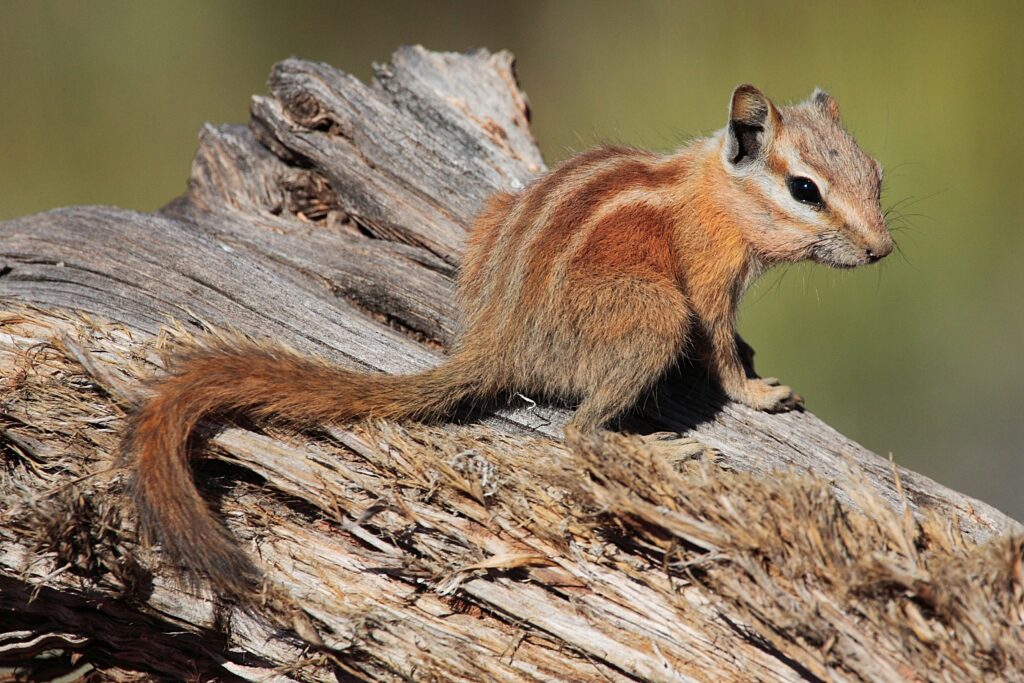Chipmunk subspecies only found in the White Mountains could be listed as endangered

The U.S. Fish and Wildlife Service is seeking comments regarding listing the Peñasco least chipmunk as endangered.
The Peñasco least chipmunk is a subspecies of the least chipmunk that has historically been found only in the White and Sacramento mountains of southern New Mexico. However, it has not been seen in the Sacramento Mountains since 1966 and its population in the White Mountains is declining and could be destroyed by catastrophic events like fire or disease.
The nonprofit advocacy group WildEarth Guardians petitioned the Fish and Wildlife Service to list the chipmunk as endangered in 2011, citing threats like habitat loss and degradation as well as climate change.
Following the petition, the Fish and Wildlife Service found that listing the chipmunk as endangered is warranted.
“These rare animals have been on the brink of extinction for decades, and we’re glad to see the Fish and Wildlife Service finally move them out of the bureaucratic purgatory and towards recovery,” Joe Bushyhead, an endangered species policy advocate for WildEarth Guardians, said in a press release.
The Fish and Wildlife Service has proposed designating more than 6,500 acres in three units in the White Mountains in Lincoln and Otero counties as critical habitat for the chipmunk. The critical habitat is in the White Mountains at elevations between 8,200 and 11,800 feet.
The three units proposed for critical habitat include Nogal Peak, Crest Trail and Sierra Blanca. The lands are both federal and tribal. The tribal lands belong to the Mescalero Apache Tribe. The critical habitat includes Ski Apache Resort in the Sierra Blanca unit.
According to the notice published in the Federal Register, the chipmunk has been seen at Ski Apache Resort on Lookout Mountain and the summer activities at the ski resort, including maintenance, can negatively impact the chipmunk. The Fish and Wildlife Service has had conversations with the Mescalero Apache Tribe, according to the notice.
In addition to maintenance activities, organized mountain bike races and the creation of trails could impact the chipmunk. The notice states that the chipmunk can also be hit by cars and stressed by zipline use.
Other threats the chipmunk has faced include logging, grazing and feral hogs.
More than half of the chipmunk’s range is within the White Mountain Wilderness Area in Lincoln National Forest, which prevents logging and grazing in the White Mountain Wilderness Area has also been closed for 20 years.
Additionally, the chipmunk’s range overlaps with the Mexican spotted owl’s critical habitat. However, while this restricts logging, the Fish and Wildlife Service states that grazing is still permitted and that grazing could reduce the vegetation that the chipmunk relies upon for food.
Comments can be submitted at regulations.gov or by mail to Public Comments Processing, Attn: FWS–R2–ES–2020–0042, U.S. Fish and Wildlife Service, MS: PRB/3W, 5275 Leesburg Pike, Falls Church, VA 22041–3803.
This article was originally posted on Chipmunk subspecies only found in the White Mountains could be listed as endangered







